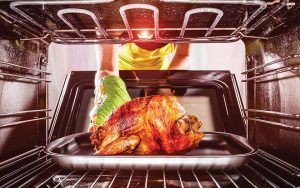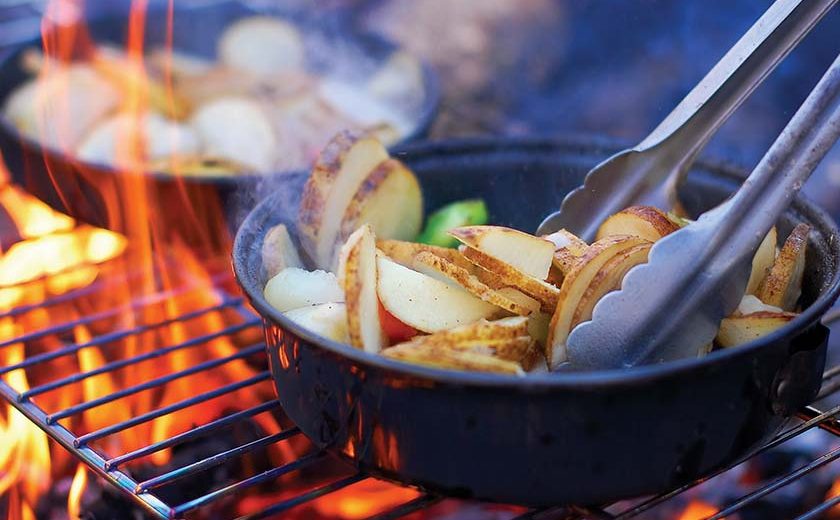Water
- Use the least amount of water you can get away with. It will take less time and energy to bring it to a boil. Use the lowest possible heat setting to keep the water boiling, steaming, simmering, or whatever your recipe calls for.
- Cover your pots when you can. The water will boil faster. That’s physics.
Pans
- Use the smallest pan possible when cooking. Smaller pans require less energy.
- Consider copper-bottom pans. These heat up faster than regular pans.
- Keep the burner pans (the metal pans under the burners that catch grease) clean and shiny so they will be more effective at reflecting heat up to the cookware. Blackened burner pans absorb a lot of heat, reducing burner efficiency.
- With electric cook tops, match the pan size to the element size. For example, a 6” pan on an 8” burner will waste over 40% of the heat produced by the burner.
- For soups and stews that require long cooking periods, using a crockpot will save a significant amount of energy.
- For stove-top cooking, consider using a pressure cooker. By building up steam pressure, they cook at a higher temperature, reducing cooking time and energy considerably.

Oven
- Full-size ovens are not efficient when cooking small quantities of food. When cooking small- to medium-sized meals, it generally pays to use smaller microwave ovens, toaster ovens, or slow-cook crock pots.
- If you have two ovens, use the smaller one whenever you can.
- When using conventional ovens, keep your preheating time to a minimum. Unless you are baking pastries or breads, you may not need to preheat at all.
- Try to avoid opening the oven door a lot as you cook. Each time the door is opened, a significant amount of heat escapes. As a result, food takes longer to cook and you waste energy. Instead, use your oven light and inspect through the oven door window.
- Foods cook more quickly and more efficiently in ovens when air can circulate freely. Do not lay foil on racks. If it is possible, stagger pans on upper and lower racks to improve air flow if you are baking more than one pan at a time.
- Cook double portions when using your oven, and refrigerate or freeze half for another meal. It does not take as much energy to reheat the food as it does to cook it – not to mention the saved preparation time.
- Use glass or ceramic pans in ovens. You can turn down the temperature about 25 degrees and cook foods just as quickly.
- With microwave ovens, keep the inside surface clean to allow more efficient microwave cooking. You can often cook foods right in their serving dishes, thus saving time and reducing the amount of hot water needed for dishwashing.
Cooking
- Use meat thermometers and timers to avoid overcooking.
- Overcooking not only spoils the taste and reduces the nutritional value but also wastes energy.
Electric Burner
- When using electric burners, solid disk elements, and radiant elements under ceramic glass, use flat-bottomed cookware that rests evenly on the burner surface. An electric element is significantly less efficient if the pan does not have good contact with the element.
- With electric burners, you can turn off the burner just before the cooking is complete. The burner will continue to radiate heat for a short while.
- When using gas burners, make sure that you are getting a bluish flame. A yellow flame indicates that the gas may not be burning efficiently. If this is the case in your home, have your gas company check it out.
Refrigerator
- To reduce cooking times, defrost frozen foods in the refrigerator before cooking.


